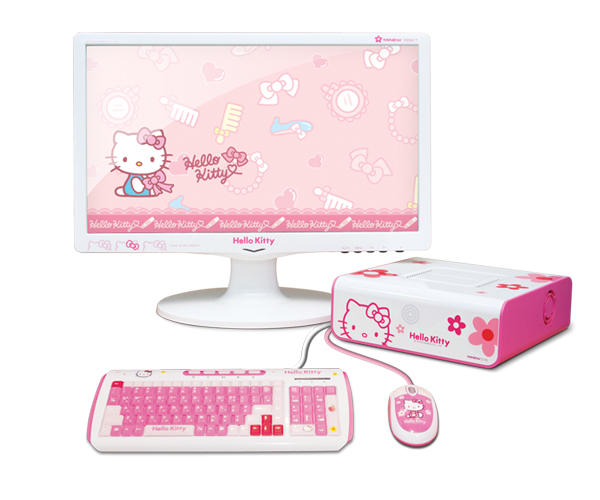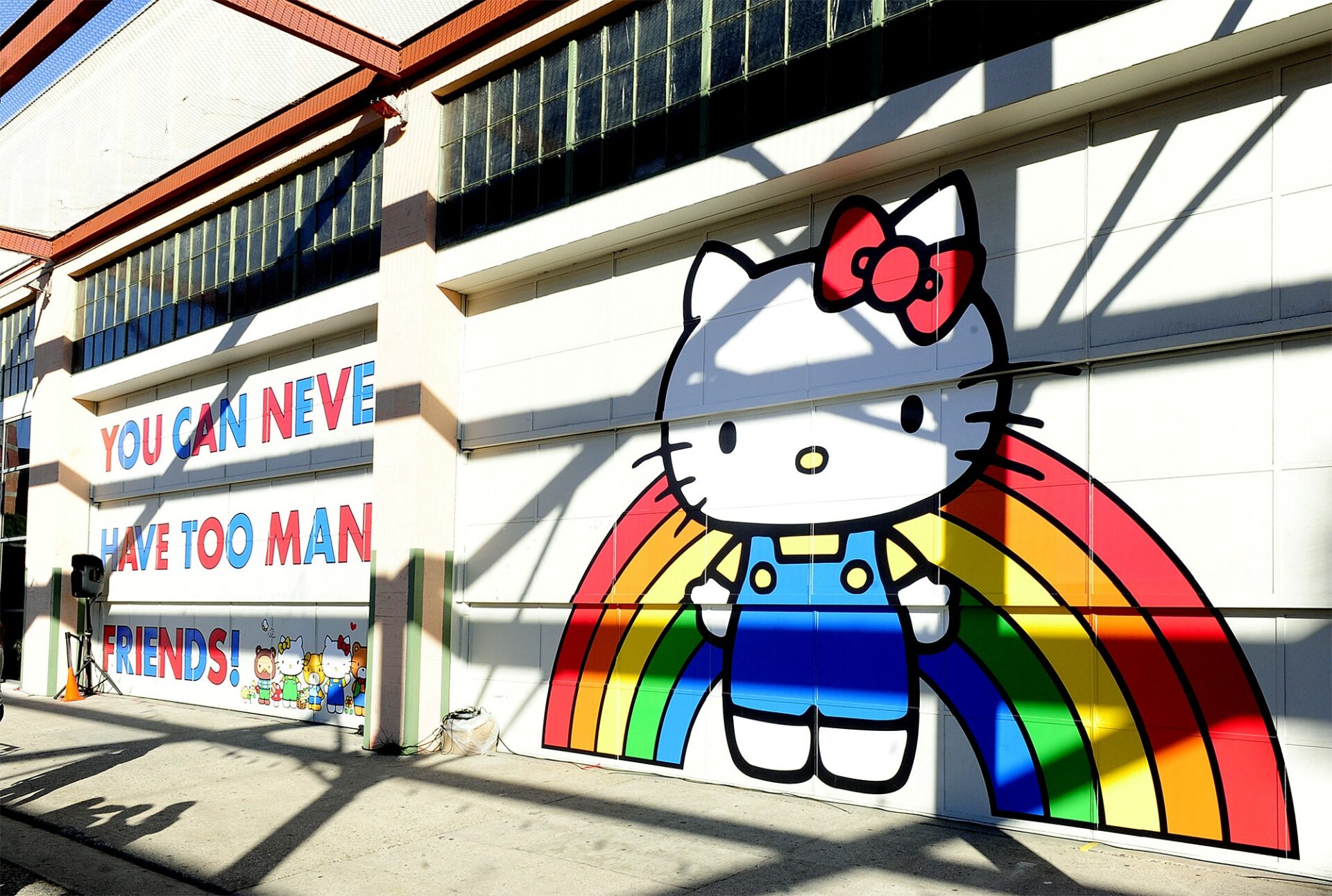‘We recognize and accept that we have failed to meet everyone’s expectations. We sincerely apologize and ask for your forgiveness for any inconvenience and disappointment this may have caused. We wish to extend our sincere apologies and thanks to the Singapore Police Force, Ministry of the Environment, Singapore Civil Defence Force,
and everyone who has been inconvenienced during this promotion.’
~ Stephens (2000) reporting on a full page statement by McDonald’s Singapore appearing in Singapore newspapers, January 2000.
‘During this promotion’? They can’t possibly mean a marketing promotion, can they? The police, government and civil defence forces needed for a marketing promotion? The answer is yes—a marketing promotion, needing the forces of law and order. McDonald’s in Singapore underestimated the appeal of a white kitten with a bow and no mouth and her mouthless boyfriend and the chaos caused when consumers felt they might miss out. The kitten in question is, of course, ‘Hello Kitty’ and her boyfriend, ‘Dear Daniel’. And the promotion—buy a burger meal and get a 22 cm high Hello Kitty or Dear Daniel for $2.60 Singapore dollars, major savings compared with the regular retail price.
When McDonald’s began the promotion on New Year’s Day 2000, it had 2.4 million dolls on hand (in 12 different sets), which according to their estimates was sufficient quantity for a six-week promotion. What McDonald’s failed to add into their calculations was first, the broad-based appeal of Hello Kitty, and secondly, the Singaporean phenomenon known as kiasu, roughly translated as ‘the fear of missing out. Kiasu led thousands of Singaporeans to wait in line all night to be the first through the doors to get the increasingly scarce dolls. Queue jumping led to the arrest of six people and the injury of a policeman. One man was charged with disorderly behavior over protests after McDonald’s opened a different door to the one he had been waiting at for 12 hours. At its height, this McKitty McFrenzy generated almost 300,000 daily visits to McDonald’s. And they were not all prepubescent girls. Grandparents lined for hours to get the toys for their grandchildren (or so they claimed!). Fathers fought for the toy for their children (again, so they claimed!). And over 20s wanted Hello Kitty and Dear Daniel for traditional Valentine’s Day love gifts.
McDonald’s acknowledged that it was caught unawares and had seriously underestimated demand. To quell the negative publicity (which reached world media) they resorted to selling vouchers for Hello Kitty and Dear Daniel dolls dressed in Chinese wedding outfits, redeemable when stocks arrived in July 2000. Embarrassed by garbage bins overflowing with discarded burger meals in the early weeks of the promotion, McDonald’s introduced a system where the cost of the meal could be donated to charity. By mid-February 2000, $37 000 Singaporean dollars had been donated to charity compared to estimated takings of $11.7 million for McDonald’s. All for a little white kitten!
When Sanrio of Japan created Hello Kitty in 1974— yes she’s in her late 20s!—little did its founder, Shintaro Tsunji, know that he was creating a multibillion-dollar empire that would not just take hold in Japan but would take Nippon culture not only to Asia but the rest of the world. Hello Kitty and her boyfriend Dear Daniel have been joined by Tuxedo Sam, the penguin, and My Melody, the rabbit, among others, and adorn a range of products and services that is exceptional even in today’s merchandising culture. The characters adorn standard merchandise, such as clothing, stationery, housewares, video games, and automatic bank teller, credit and phone cards.

Hello Kitty cafes serving kitty-shaped waffles and Kitty Colada drinks continue to be extremely popular in Hong Kong and throughout Asia, as is the Hello Kitty Megastore in Causeway Bay, selling mega volumes of Hello Kitty merchandise. Hong Kong television even has a Hello Kitty sponsored Weather Report—read by newsreader Wincy Miaow! In the late 1990s, Sanrio opened Puroland theme park in Tokyo for Hello Kitty aficionados, creating a powerful rival for Disneyland Tokyo, especially among visitors from Taiwan and China. The turn of the century saw Sanrio launching a Hello Kitty hotel to cater for the ‘Kittyra’, as Hello Kitty fans are known in Japan.
The popularity of this cat across the age groups
If you are initially thinking that Hello Kitty appeals only to young girls and perhaps some young boys consider the following items of Hello Kitty merchandise for sale throughout Asia: Hello Kitty watches adorned with Austrian Swarovski crystals; Hello Kitty notebook computers complete with Hello Kitty mouse and reasonably powerful computing capabilities; companion Hello Kitty fax machines; powder blue Hello Kitty Yamaha motorcycles; Hello Kitty jeeps by Daihatsu (sorry, no whiskers on the bonnet); Hello Kitty body-fat monitors; Hello Kitty toilet paper; and believe it or not, Hello Kitty condoms! While the characters appeal primarily to prepubescent girls in North America (although pop sensation Christina Aguilera and model Tyra Banks are fans and American stores carry T-shirts and tank tops in women’s sizes), Hello Kitty’s appeal throughout Asia is much broader as witnessed by the merchandise for sale.

That being said, Sanrio’s corporate-owned Kitty Boutiques generated sales of $1.2 billion in the United States in 2000, indicating either an extremely lucrative prepubescent market or a broader appeal than believed. Sanrio, listed on the Tokyo Stock Exchange, has a Hello Kitty line that covers an estimated 15,000 products, with 100 new items released every month. Sanrio also licenses approximately 500 companies to make Sanrio-approved items. As can be imagined, Hello Kitty is also a hot kitten in the black market, with a booming trade in knock-off merchandise. A visit to any Asian street market will reveal stall after stall of Hello Kitty products, a large number likely not Sanrio-approved.
Sanrio makes sure that store shelves always have new merchandise, stopping production after a few months
and keeping products on the shelves for only a limited time. This strategy has increased the collectible value of
the merchandise. Remember the $2.60 McDonald’s Hello Kitty doll? In early 2001, a six-pair set was offered
for sale on the Internet for $470. Hello Kitty has kept up with technology. For example, www.dreamkitty.com, a
Canadian online boutique provides an ever-changing array of Hello Kitty merchandise. A quick search of the Internet using the search terms ‘Hello Kitty’ will reveal an amazing array of retail sites and chat rooms devoted to
Kitty and Daniel.
The Kawai Culture
To understand the Hello Kitty phenomenon in Japan, you have to understand kawaii (‘hou Q’ in Hong Kong). Literally, ‘kawaii’ means cute but figuratively means things that are desired to fulfill one’s life. Kawaii culture originated with 15 to 18-year-old girls in Japan who became the holy grail for advertisers and marketers in the fashion, publishing, and cute-little-gadgets industry. As one industry observer stated ‘it’s not how much they spend . . . it’s that they all buy the same things. If an item is hot, such as pocket pagers (called pocket bells in Japan) or mobile phones, market penetration can reach 100% in a matter of weeks.
Internationalization of Japanese Culture
The core values of kawaii, however, have spread far beyond its original members and extended beyond Japan
throughout Asia. Hello Kitty has given birth to the mega publishing, media, and merchandising industry, including
Sailor Moon, Pokemon, Digimon, Dragonball Z, and the Power Puff Girls are aimed at kids—essentially those below
the age of 18. Hello Kitty has also led the charge of Nippon culture throughout Asia. Consumers in Hong Kong, South Korea, Taiwan, Singapore, Malaysia, and other Asian cultures view ‘Made in Japan’ like ‘way cool’, embracing all things Japanese. Asian consumers, especially young adults—a prime target for marketers— find they can relate more to the ideas, concepts, and imagery expressed in Japanese music, movies, media, clothing, and merchandise than they can to American or European popular culture. While American pop culture still dominates with Hollywood films generating the biggest box-office draws, Asians are increasingly turning away from the ‘Baywatch’-inspired beach/body images and family values expressed in music such as US rap lyrics. And increasingly, they are turning to all things Japanese.
Also Read: How Parle Agro’s Bailley Broke The Monopoly Of Bisleri
Four out of five comic books sold in South Korea are Japanese; Japanese pop music acts sell out in Taiwan and Singapore and while most Taiwanese consumers cannot read Japanese, owning karaoke videos with lyrics
in Japanese is considered a status symbol. According to HMV’s commercial director for Greater China and SouthEast Asia, ‘Asians like to have stars they can identify with, instead of always looking to the West. . . . Japanese stars modify western music to make it more suitable for Asian listeners’. J-pop is taking over more floor space in music shops and on commercial broadcasters such as Star TV’s music channel. Japanese soap operas, operating on larger production budgets than their Asian counterparts, have a loyal Asian following that rivals those of their American counterparts. Nippon culture provides an Asian dimension to popular culture not understood by western
artists and designers—or marketers. Japanese animated films draw heavily from Chinese myths and traditions,
with characters using their life energy (ki in Japanese, qi in Chinese) and group allegiances to prevail.
Compare the American icon, Superman, who singlehandedly fights evil with his Japanese counterpart, Ultraman, who enlists the support of his extended family to fight evil and even performs Buddhist funeral services for his victims. Asian fashion designers realize that the western aesthetic of the tall curvaceous blond does not match the dark hair, skin, and slimmer bodies of Asian consumers and design accordingly. Japanese fashion and entertainment have created an image of quality among Asian consumers, with great attention to detail. Japanese marketers have capitalized on the Asian preference for group activities and the role of the extended family, something most western marketers have difficulty understanding. Japan’s focus on innovation and short product development cycles match the lucrative youth market’s short attention spans and mania for the newest, brightest, and most bizarre.
This fixation with all things Japanese suggests an emerging Asian identity, replacing past adulation of all things Western. Asian consumers are increasingly becoming more comfortable with Japan’s values and lifestyle with its focus on family ties, respect for elders, and the emotion of personal relationships. According to one Sony talent scout ‘a decade ago, we Asians had no modern image of ourselves. We had no cultural identity to match.’
Despite memories of wartime brutality and longstanding restrictions on Japanese imports, Japanese culture has succeeded in penetrating Asian markets, representing a profound generational change. While Asia’s youth may have been raised at their elders’ knees on stories of Japanese occupation and wartime atrocities, it has not restricted their desire for all things Japanese, leading to the more benign invasion of Japanese pop culture, spearheaded by Hello Kitty. In Taiwan, those who follow Japanese trends even have a name: harizu or ‘Japan-crazy tribe’. Trade on the black market of restricted products flourishes, with sales increasing even further when restrictions are lifted. Even
South Korea is allowing some Japanese items to be legally imported—for example, award winning films and records—and has removed restrictions on J-pop live performances. Japanese culture cafes and teahouses are quickly replacing American fast food restaurants as preferred meeting places for South Korea’s younger generation. Approximately 1.5 million Asians are studying Japanese, up 29% from 1995–1999, all the better to understand the latest trends.
One Thai scholar believes that Thailand can learn from Japan, what he considers the most civilized country in Asia, while a Hong Kong scholar believes that Hong Kong consumers admire the richness of Japanese culture, epitomized by the tea ceremony, compared to the money focus of Hong Kong culture. A South Korean academic,
commenting that Japanese culture now ranks second in terms of global market share behind the United States,
believes that ‘Culture is like water. It flows from stronger nations to weaker ones. People tend to idolize countries
that are wealthier, freer, and more advanced, and in Asia, that country is Japan’.
Geographic and cultural closeness, the expansion of Asian media and television broadcasting coupled with aggressive marketing and packaging have also fuelled the invasion of Nippon culture. While not to the same extent as in Asia, Nippon culture has spread to the western world, with Hello Kitty remaining the poster girl for all things Japanese. In 1959 French philosopher, Alexander Kojeve, wrote that ‘The interaction of the West and Japan will result not in a vulgarisation of Japan but rather in a Japanisation of the West.’ (Marketing, 2000). He would likely look at American basketball players sporting Japanese calligraphy tattoos, the popularity of brands such as Sony (from televisions to stereos to Playstation 2), the popularity of ‘Tokyo chic’ fashion, the translation of obscure Japanese anime and television into English, called ‘fansubbing’, and the never ending array of innovative and downright bizarre products emanating from Japan as support for his beliefs.
The Internet has facilitated an almost constant cultural exchange bridging geographic and time boundaries between Japan and the rest of the world. Consider, for example, that the demand for Pokemon was well established through Internet chat rooms long before Nintendo America began its promotional campaigns. And this is likely to continue as long as innovation remains the ‘Viagra of Japan’. And it is likely Hello Kitty will still be around to welcome her grandchildren as new ambassadors of Nippon culture, to Asia and the world!
To read more content like this, subscribe to our newsletter



